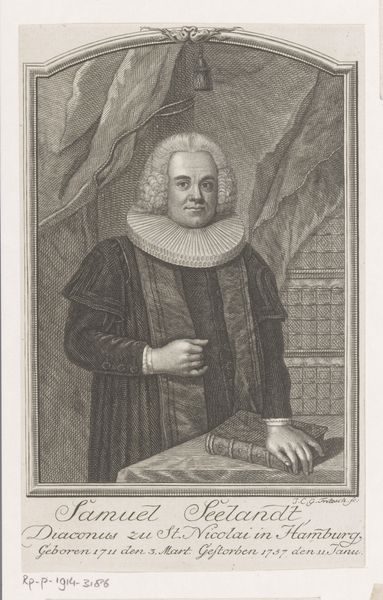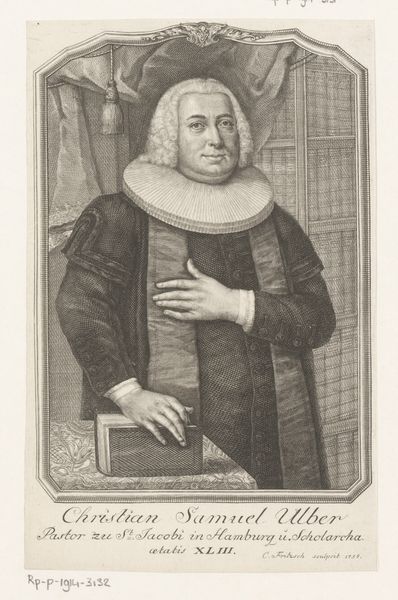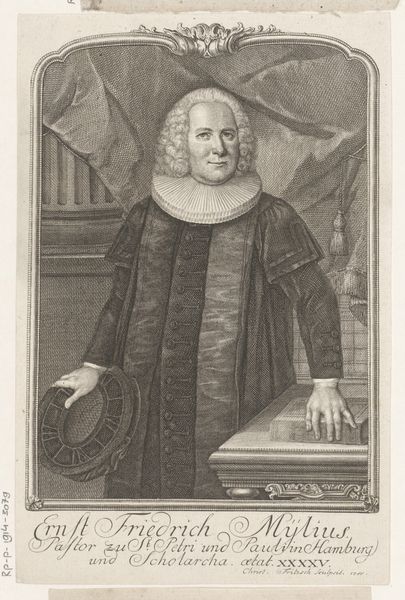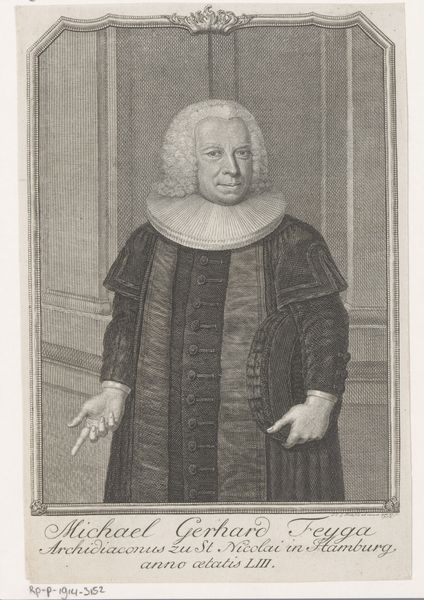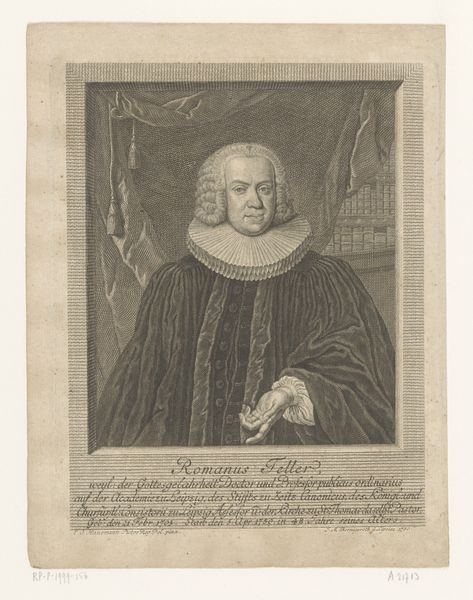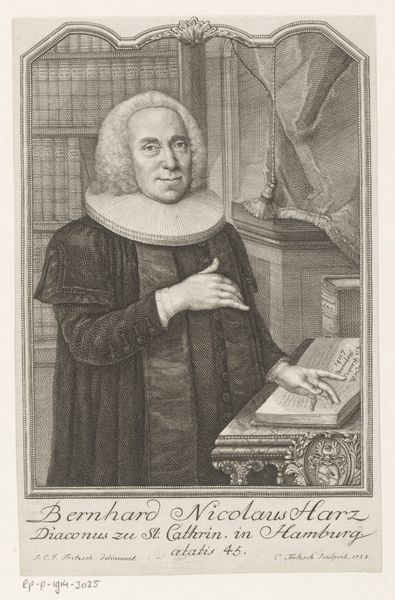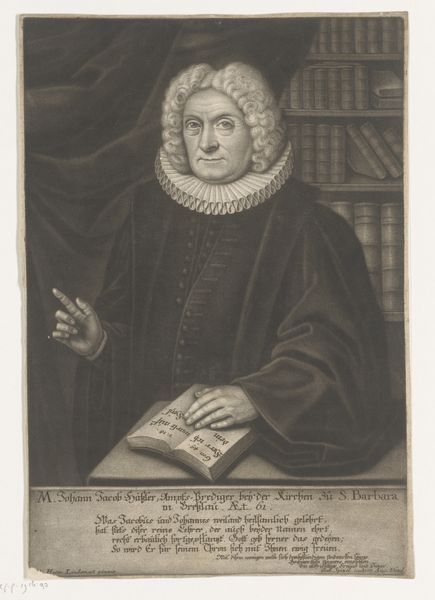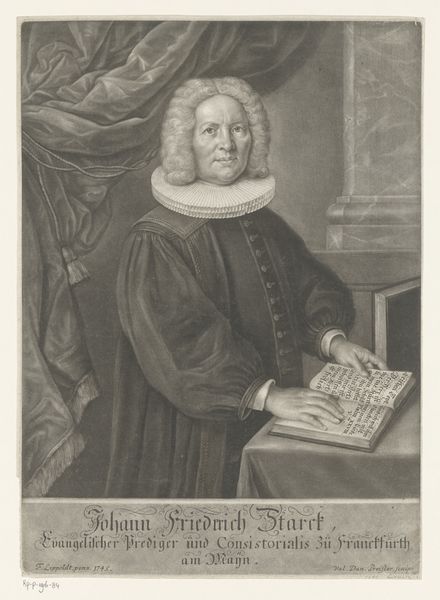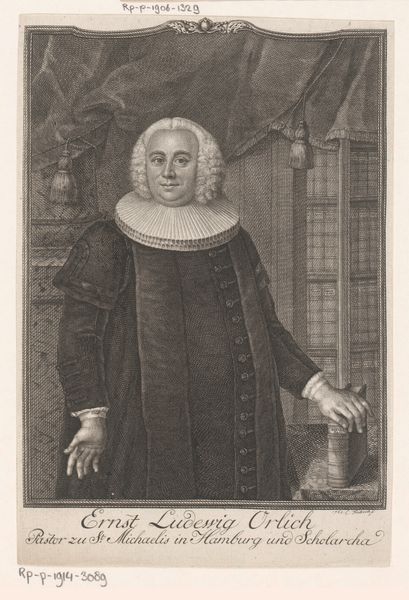
drawing, print, paper, engraving
#
portrait
#
drawing
#
baroque
# print
#
paper
#
portrait reference
#
history-painting
#
engraving
Dimensions: height 178 mm, width 102 mm
Copyright: Rijks Museum: Open Domain
Curator: Let's consider this detailed engraving from 1750: a portrayal of Samuel Seelandt rendered by Christian Fritzsch, currently held in the Rijksmuseum collection. It gives us much to unpack about class, religious role and position. Editor: It strikes me first as rather somber. All that grey! But his gaze is surprisingly direct, as if he's daring me to judge his rather enormous ruff. Almost humorous. Curator: The ruff is key, I think. Consider the function of these objects in signaling not just wealth, but social status and even, potentially, adherence to certain moral codes or intellectual frameworks. The inscription denotes that Seelandt was Deacon at St. Nikolai in Hamburg which contextualizes the piece beyond just visual representation, providing a distinct anchor within a network of societal expectations. Editor: It also, oddly, reminds me of a giant Elizabethan lampshade. Sorry! But visually, the texture is superb. You can almost feel the crispness of the starched linen. Do you think he picked it out himself? Maybe it's the height of fashion amongst Hamburg Deacons? Curator: One wonders about the power dynamics embedded in representation itself, particularly when considering an individual like Seelandt situated within the religious and social hierarchies of 18th-century Hamburg. Fritzsch, as the artist, inevitably interprets as much as depicts. What is the effect, therefore, of his composition on Seelandt’s perceived authority? Editor: Right. He's got that hand strategically placed on a book – subtle nod to knowledge and piety? He’s saying, “I'm important, serious, read things..." Perhaps. Curator: Exactly! And by engaging intersectionally—probing considerations around profession, the religious patriarchy of the period, as well as gendered codes woven into such a display— we can move toward unveiling richer sociohistorical perspectives via art historical discourse. Editor: All that in one portrait? Well, it definitely gets you thinking, beyond just wondering how long it took him to get dressed. The engraving captures a certain human presence, despite the rigid formality. You sense a person there, slightly world-weary, perhaps. Curator: Yes, reflecting further expands and enriches this piece. Thank you. Editor: Likewise, I have appreciated our perspective sharing, expanding beyond that gigantic ruff.
Comments
No comments
Be the first to comment and join the conversation on the ultimate creative platform.
